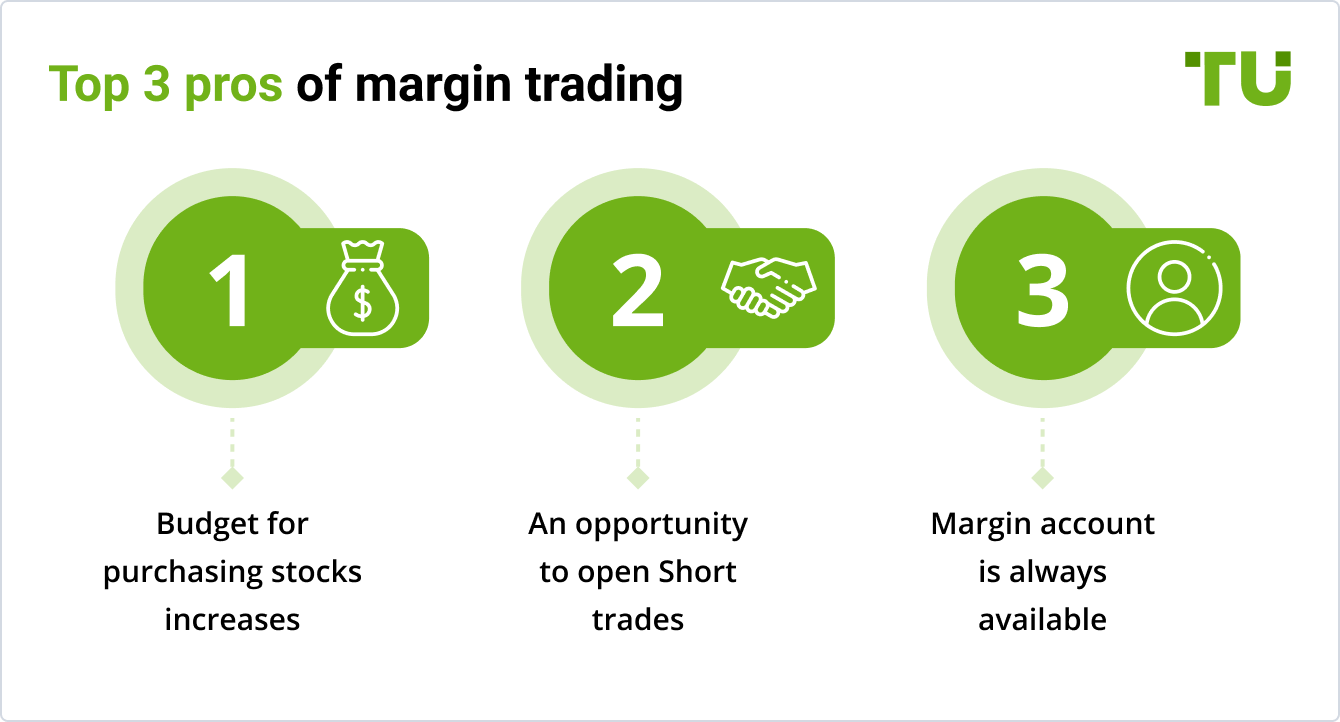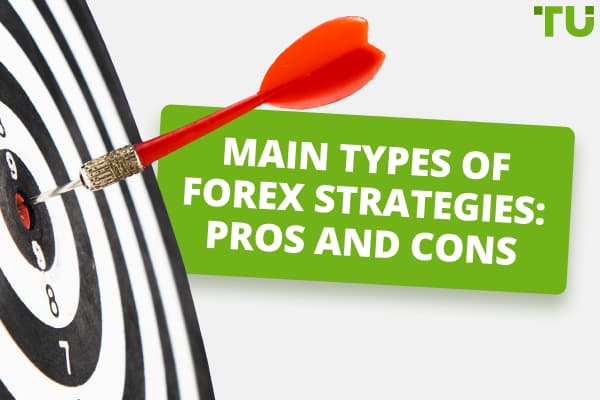Margin Trading: How to Use Margin Properly and Control Risks
Normally, when you invest, buy, sell, and trade stocks and securities, you have a fixed amount of money to invest, and that’s all you have to work with.
However, if you have a special kind of trading account, known as a margin account, you can use the money you have to borrow additional funds, which lets you buy more than you would using just your own funds.
In essence, the money you have in your margin account acts as collateral, the broker lends you additional money, and you repay it at an agreed upon interest rate.


What is Margin Trading?
Margin trading is a trading option that allows people to leverage more money than they personally possess.
The investor or trader will deposit their own money into a special brokerage account, known as a margin account, and then a broker will lend them additional money, that they can then use to invest and trade.
So, for example, if you have a margin account that requires a 60% margin, and you want to trade with $10,000, your cash / collateral or investment would be $6,000, and the remaining $4,000 would be provided by the broker.
Investors and traders do not automatically have a margin account. This is a special kind of trading that you have to opt in to use. So, if you’re not looking to trade on margins right now, don’t worry – if you didn’t request and authorise a margin account, you don’t have this option!
How Does Margin Trading Work?
Margin trading increases the money you have to invest, so the amount you can profit (or lose) is automatically increased proportionately.
Let’s assume that you have $6,000 to trade, as per the previous example, and you borrow $4,000 on margin to trade. You now have $10,000 in total available to trade.
If things go well, and the trade works in your favour, you invest your $10,000, and you make 10% profit.
In this case, you would not only make $600 on the money you already had, but you would make an additional $400 on the money you essentially borrowed on margin. So, assuming the interest your broker charges is low, you would make nearly 40% more on the trade than you would have with your own money.
That’s the big advantage of margin trading. But it’s a double-edged sword.
If, with the exact same setup, you made a 10% loss on the trade, you would not only lose $600 on your own money, but you would also lose $400 of the broker’s money. So, you would not only owe them interest, but also the money you lost on the trade.
It’s easy to see which scenario you would be hoping for, but it’s important to remember that these kinds of trades always have an element of gambling in them. You can make educated guesses, and when things go well, they could go very well. But you could also lose a lot of money really quickly if they don’t!
Margin call: maintenance margin vs initial
Margin maintenance requirements are an important risk management aspect of margin trading that traders need to understand. The maintenance margin refers to the minimum equity balance that must be maintained in a margin account to continue supporting the current leveraged positions.
The maintenance margin is calculated as a percentage of the initial margin requirement, often between 25-30%. For example, if the initial margin to open a $10,000 leveraged position is $2,000, the maintenance margin may be 25% of that, or $500.
The key difference between initial margin and maintenance margin is that the initial margin is the amount required to first enter a leveraged position, while the maintenance margin is the lower amount needed to keep the position open.
If the equity in the account falls below the maintenance margin level, the broker will issue a margin call, requiring the trader to deposit additional funds or sell assets to meet the minimum.
The danger is that as market values fluctuate, the equity can dip below the maintenance margin without much warning, triggering a short-term margin call. Monitoring margin balances is crucial to avoid getting caught off guard.
Importantly, maintenance margin requirements vary across brokers and types of securities. For example, the maintenance margin on equities may be 25% but higher at 30% for volatile commodities. Traders should understand their broker's specific margin policies.
In summary, the maintenance margin and margin call mechanics are essential risk management factors that traders must incorporate into their strategies and risk management approach when trading on margin. Depositing more funds or closing positions may be necessary to meet margin calls and prevent forced liquidations as the maintenance requirements are designed to protect the interests of both trader and broker.
How to Calculate Your Safe Margin level?
Here are the steps to calculate your safe margin level:
Determine your account equity. This is the total value of your trading account including cash and securities.
Calculate used margin. This is the amount of margin being used to maintain your open positions.
Subtract used margin from account equity to get your free margin. This is the amount left over after accounting for the margin being used.
Divide free margin by used margin and multiply by 100 to get your margin level as a percentage.
For example:
Account Equity: $10,000
Used Margin: $1,000
Free Margin: $10,000 - $1,000 = $9,000
Margin Level: ($9,000 / $1,000) x 100 = 900%
The general safe margin level is considered to be at least 150-200%. This means you have 1.5 to 2 times more equity than margin being used. Calculate your margin level regularly to ensure you have enough cushion and avoid a margin call. Reduce position sizes if the margin level gets too low.
Margin Trading Benefits VS Risks
Investing in anything is risky, but some kinds of investment are a little riskier. Margin trading definitely falls into the latter category, and it’s certainly not for people who like secure and stable places to keep their money with moderate growth over time.
But, if you have the money available, and you have the right advice to learn while you’re trying it out, it can be very profitable very quickly. Here are some of the most important benefits and risks of margin trading, so you can make informed decisions – and ask the right questions!
Margin Trading Benefits
Margin trading is a great way to make money – if you have the money to invest, the skills to make the right choices, and a little luck.
There are other benefits too, including:
-
You have more money to work with – which means when things go well, you can make a lot more profit.
-
Margin trading allows you to short stocks – which means you sell them when they are high, and then buy them back later at a lower price, and pocket the difference.
-
A margin account gives you a convenient, preapproved source of credit for your trades. Once it’s set up, you need to maintain it, but it will always be available when you want to use it.
-
If you already have a large chunk of one kind of stock, you can use it as collateral in a margin account and use the credit you get to diversify your portfolio.
-
Margin accounts typically have low interest rates, and you have flexible repayment options.
-
There might also be tax benefits to using a margin trading account, but you should speak to a tax professional to confirm this for your particular situation.
Margin Trading Risks
Have you ever heard the saying “high risk and high reward?” Well, you can certainly get high rewards from margin trading, but there are also risks that you should be aware of.
These include:
-
You can lose your money faster. Because you’re not only losing a percentage on your own money, but the money you borrowed too, when things go bad, you can lose your money a lot faster.
-
Being unable to meet a margin call. If your brokerage decides you’re losing too much money, they might make a margin call at any time. If you can’t deposit more funds into your account, they can sell your stocks and investments without your permission, to bring y our account back up to the minimum.
Of course, no one likes to think about things going bad, but it’s important to keep these possibilities in mind when you’re considering this kind of trading.
Margin Trading Tips
If margin trading sounds a little like gambling with other people’s money, you’re not entirely wrong. Of course, there’s not as much risk, and the house doesn’t always win, but you’re definitely taking a few more chances with your investments when you go this route.
There are a few ways you can limit your risk though, which include:
-
Leave as much of a cash or investment cushion in your account as you can, which will reduce the chances of a margin call.
-
Diversify, diversify, diversify! You need to position your account to withstand market volatility, which means you need to invest in a variety of sectors, so that your risk is spread out. It’s the investment equivalent of not putting all your eggs in one basket!
-
Understand that markets are volatile. A little up and down is expected – so don’t panic at the first sign of little flutters.
-
Always invest in securities that will earn you more profits than the interest on your loan. If you don’t cover that cost, even if you don’t lose money on trades, you’ll still lose money in reality, which is really the same thing.
-
Don’t risk money you can’t afford to lose.
-
Set a personal minimum investment level. When things get too hot, get out of the kitchen. It’s always better to learn from a small loss than to lose it all trying to play chicken with the markets.
-
Pay the interest on your loans as often as you can. Compound is your friend when it’s your money, but your enemy when it’s on someone else’s!
-
If you have no idea what you’re doing, speak to someone who does. Unless you have a lot of money you can afford to gamble (and potentially lose), it’s always best to get professional advice when you are starting out.
Margin Account Example
There are many different margin accounts out there, but they are all based on the same basic structure and terminology.
First, there will be a minimum investment. This is the lowest amount you need to invest of your own money, in order to open a margin account.
Next, there’s the margin rate. This is the interest that the margin broker will charge you on the money they lend you to trade with. In most cases, the larger the amount you have in your account, the lower the margin rate will be.
The interest (or margin rate) will be calculated daily and is repayable monthly. This interest can add up quickly though, so it’s best to repay it as quickly as you can.
Finally, there are various fees. Some of these are fees that your broker themselves will charge, like short selling fees. Others are exchange fees, regulatory agencies, and other organisations. These are usually passed directly from the authority that charges them to the investor. There are also fees to pay for deposits, withdrawals, and other actions on your account.
If you are new to margin trading, make sure that you get all the details from your broker, and if you’re unsure of anything, don’t be afraid to ask.
Summary
Margin trading is an investment option that allows investors to augment their own capital by using it as collateral for a loan. This loan is added to their collateral (or their “margin”) and allows them to invest a larger amount.
This type of investment is higher risk than other types, and everything happens much quicker. So, you might buy and sell stocks in the same day, taking advantage of market fluctuations, rather than holding them for years like stocks and bonds.
FAQs

Can anyone start margin trading?
Technically, anyone who can open a margin account can trade margins. You will need to have the minimum investment account required, but other than some paperwork, there’s not much more to opening the account itself.

Do margin trades always make money?
No. There are no guarantees in the investment world. There are benefits and risks to margin trading, and you need to discuss both with your broker before you decide.

What can be used as collateral for margin trading?
Aside from cash, you can use ETFs and equities, mutual funds, and many kinds of bonds. You can not use annuities, CDs, money market funds and some other kinds of investment. If you are in doubt, speak to your broker. They will be able to clarify this for you.
What happens if I get a margin call?
If you get a margin call, it means things are not going according to plan, and if you want to keep all your open positions, you need to deposit money or more eligible investments into your account as collateral. If you don’t, your broker can close your open positions without consent.
When must I answer a margin call?
Immediately. Your broker will expect you to deposit adequate collateral immediately, or they will take action to close open positions or liquidate your account.

Do I need a lot of money to start margin trading?
No. You can start margin trading with a few thousand dollars. In fact, if you are new to this kind of trading, it’s a good idea to start small, and gain knowledge and experience before you take any bigger risks.
Where can I find more information about margin trading?
There are margin trading calculators available, where you can run various hypothetical scenarios before you make trades or invest in a margin account. You can also speak to your broker, who will be able to provide advice.
Team that worked on the article
Chinmay Soni is a financial analyst with more than 5 years of experience in working with stocks, Forex, derivatives, and other assets. As a founder of a boutique research firm and an active researcher, he covers various industries and fields, providing insights backed by statistical data. He is also an educator in the field of finance and technology.
As an author for Traders Union, he contributes his deep analytical insights on various topics, taking into account various aspects.
Dr. BJ Johnson is a PhD in English Language and an editor with over 15 years of experience. He earned his degree in English Language in the U.S and the UK. In 2020, Dr. Johnson joined the Traders Union team. Since then, he has created over 100 exclusive articles and edited over 300 articles of other authors.
The topics he covers include trading signals, cryptocurrencies, Forex brokers, stock brokers, expert advisors, binary options. He has also worked on the ratings of brokers and many other materials.
Dr. BJ Johnson’s motto: It always seems impossible until it’s done. You can do it.
Mirjan Hipolito is a journalist and news editor at Traders Union. She is an expert crypto writer with five years of experience in the financial markets. Her specialties are daily market news, price predictions, and Initial Coin Offerings (ICO). Mirjan is a cryptocurrency and stock trader. This deep understanding of the finance sector allows her to create informative and engaging content that helps readers easily navigate the complexities of the crypto world.









